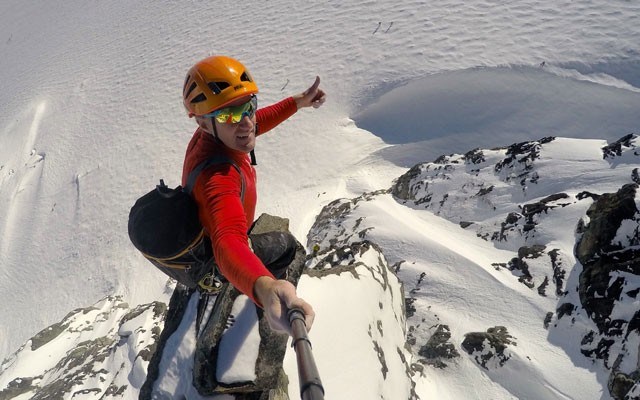Just because conditions for skiing haven't been optimal doesn't mean athletes should avoid the mountains altogether.
Whistler Core Climbing and Fitness Centre president Bob Allison embodied that belief last week when he and Josh Freeman took to Blackcomb Mountain on Feb. 17.
In addition to climbing Spanky's Wall, Allison and Freeman took the Finestone Cowboy line up the Whistler Showcase Spire, as opposed to the more traditional Darn Gendarme route.
Allison explained having clear skies is a necessary element of winter climbing, while a meteorological inversion and non-existent wind would both be bonuses for any traverse. All three were present during the most recent ascent, said Allison, who has recently embraced the winter climb.
"For at least the last five years, I've done it in January or February at least once," Allison said. "(Having) clear skies is the first, most important thing in the formula.
"Bruce Kay and I did it once — he's one of the guys that did the first ascent — and the temperatures were probably -10 or -12 when we actually did it. The sun was on it, so that heats up the rock a bit. It's chilly, but it was OK."
Allison estimates there are only 10 winter ascents a year in the area. However, the ability to ski to a climb site does provide an advantage over summer attempts.
"In wintertime, it's easy to get to because you can get to the base of it," he said. "In summertime, it's more of an undertaking to hike all the way up there, but I've done it."
Allison, a 40-year veteran of the sport, explained "good mountain climbers" should be capable of participating in the winter, though there are some additional obstacles.
"Because it's not done that often, the route's not obvious, so there are route-finding challenges," he said. "It's still alpine in style in that there is some loose rock. When you are climbing it, you should wear a helmet."
After having developed routes in Nordic and between Whistler and Squamish, Allison knows there are several other areas that can be developed in the Sea to Sky Corridor. However, with a fairly compact community, there will be new routes to scour for years to come.
"There's lots of rock. We're a small climbing community here, and to develop areas takes effort and work, which we've done" he said. "(First), you're looking at it and seeing the potential for a good climb, a good classic line. Then you're examining it a little closer, descending the route, seeing what potential there is. Then it's preparing the route, getting loose rock off on some of the walls where there's not potential for natural protection.
"You want to put bolts in to prepare the route, so it's an investment of time and money, but then there's the satisfaction. You picture it and then you put the puzzle together. It's a cool experience."
Allison noted it takes a minimum of a couple days to prepare a route, as well as a decent chunk of change worth of bolts and drillbits. But when a climber is up on another gorgeous British Columbia day, it's easy to recall why it's worth it, he said.
"The setting, the whole package, skiing into it, being up in the alpine, and you rap off and ski out of it, it's just such a cool feeling," he said. "You hear people on the glacier and you'll hear all sorts of comments. They'll spot you: 'Oh, what are they doing up there?' and then I'll hear somebody 'Well, they must have used a pulley to get up there.'"




